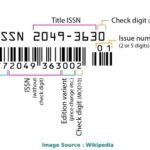Traveling can be an enriching experience, but How Much To Travel is a question that looms large for many. At SIXT.VN, we believe everyone deserves to explore the beauty of Vietnam without breaking the bank, let’s unlock the secrets to affordable travel, and plan your dream vacation. From figuring out your daily expenses to finding the best deals, we’ll guide you through every step. Planning your trip and managing finances is easier than you think with the right information and a little bit of foresight; let’s dive in.
1. Understanding the True Cost of Travel
How much does it really cost to travel? It’s more than just airfare and hotels. The true cost encompasses a wide range of expenses. Let’s break it down.
1.1. Flights and Transportation
Flights often represent a significant portion of your travel budget, but with some savvy planning, you can find affordable options. Transportation within your destination also adds up. According to research from the Vietnam National Administration of Tourism, transportation costs within Vietnam can be significantly reduced by utilizing local buses and trains, offering budget-friendly alternatives to taxis or private cars.
- Flights: Booking in advance and being flexible with your dates can save you a considerable amount. Consider budget airlines or connecting flights.
- Local Transportation: Utilize public transport, such as buses, trains, and trams, or consider renting a bicycle for shorter distances.
- Ride-Sharing Services: Options like Uber or Grab can be more affordable than traditional taxis in some cities.
- Airport Transfers: Look for shuttle services or public transportation options to and from the airport. SIXT.VN offers convenient and reliable airport transfer services in Hanoi, ensuring a hassle-free start and end to your trip.
1.2. Accommodation Expenses
Accommodation is another significant expense. There are various options to fit different budgets.
- Hotels: Prices vary greatly depending on location, star rating, and amenities.
- Hostels: A budget-friendly option, especially for solo travelers. Hostels offer dorm-style rooms and communal areas.
- Airbnb: Renting an apartment or room through Airbnb can be a cost-effective option, especially for longer stays or when traveling with a group.
- Guesthouses: Often family-run, guesthouses provide a more personal experience at a lower cost than hotels.
- SIXT.VN Hotel Booking: We also provide options for hotels in Hanoi to make your trip easier.
1.3. Food and Drink Considerations
Food can be a delightful part of your travel experience. However, dining out for every meal can quickly deplete your funds.
- Restaurants: Prices range from budget-friendly local eateries to high-end dining establishments.
- Street Food: A great way to experience local cuisine without spending a fortune.
- Self-Catering: Buying groceries and preparing your own meals can significantly cut down on food costs. Look for local markets to find fresh and affordable ingredients.
1.4. Activities and Entertainment
Exploring your destination’s attractions and entertainment options is essential, but it’s important to factor these costs into your budget.
- Attractions: Entrance fees for museums, historical sites, and other attractions can add up.
- Tours: Guided tours can enhance your experience but can also be pricey. Look for free walking tours or consider exploring on your own with a guidebook.
- Entertainment: From live music to theater performances, entertainment costs can vary widely.
- Free Activities: Many cities offer free activities, such as parks, beaches, and walking trails. Research local events and festivals that may be free to attend.
1.5. Visas and Travel Insurance
Don’t forget to factor in the costs of visas and travel insurance.
- Visas: Depending on your nationality and destination, you may need to obtain a visa. Check visa requirements well in advance and factor in the application fees.
- Travel Insurance: Protect yourself against unexpected medical expenses, trip cancellations, and lost luggage with comprehensive travel insurance.
1.6. Miscellaneous Expenses
Unexpected costs can arise during your travels, so it’s wise to set aside a contingency fund.
- Souvenirs: Budget for mementos to remember your trip by.
- Laundry: If you’re traveling for an extended period, you may need to pay for laundry services.
- Local SIM Card: Staying connected can be essential. A local SIM card can provide affordable data and calling options.
- Gifts: If you’re visiting friends or family, you may want to bring gifts.
- Emergency Fund: Set aside a portion of your budget for unexpected expenses, such as medical emergencies or transportation disruptions.
2. Estimating Daily Travel Costs in Vietnam
So, how much to travel in Vietnam? Let’s break down daily expenses to give you a clearer picture.
2.1. Budget Backpacking: $20 – $30 per day
If you’re a budget-conscious backpacker, you can travel in Vietnam for as little as $20 to $30 per day.
- Accommodation: Staying in hostel dorms (around $5 – $8 per night).
- Food: Eating primarily street food and local eateries (around $8 – $12 per day).
- Transportation: Using local buses and trains (around $3 – $5 per day).
- Activities: Focusing on free or low-cost activities (around $4 – $5 per day).
2.2. Mid-Range Travel: $50 – $100 per day
For a more comfortable mid-range experience, plan on spending between $50 and $100 per day.
- Accommodation: Staying in budget hotels or private Airbnb rooms (around $20 – $40 per night).
- Food: Dining at a mix of local and tourist-oriented restaurants (around $20 – $30 per day).
- Transportation: Using a combination of taxis, ride-sharing services, and public transportation (around $10 – $20 per day).
- Activities: Participating in guided tours and visiting attractions (around $10 – $20 per day).
2.3. Luxury Travel: $150+ per day
For a luxurious experience, the sky’s the limit. Expect to spend $150 or more per day.
- Accommodation: Staying in high-end hotels and resorts (around $80+ per night).
- Food: Dining at upscale restaurants and enjoying fine dining experiences (around $50+ per day).
- Transportation: Hiring private drivers and using premium transportation services (around $30+ per day).
- Activities: Engaging in exclusive tours and experiences (around $40+ per day).
3. Factors Influencing Travel Costs
Several factors can influence how much you end up spending on your trip.
3.1. Destination Choice
Some cities or regions are inherently more expensive than others.
- Major Cities: Expect to pay more for accommodation, food, and activities in major cities like Hanoi and Ho Chi Minh City.
- Rural Areas: Traveling to rural areas can be more budget-friendly, with lower costs for accommodation and food.
- Island Destinations: Islands can be more expensive due to transportation costs and limited resources.
3.2. Time of Year
Travel costs often fluctuate depending on the season.
- Peak Season: Prices for flights and accommodation tend to be higher during peak tourist season.
- Off-Season: Traveling during the off-season can result in significant savings, but be prepared for potential weather disruptions or limited availability of some attractions.
- Shoulder Season: The sweet spot between peak and off-season, offering a balance of good weather and reasonable prices.
3.3. Travel Style
Your travel style can greatly impact your expenses.
- Backpacking: Emphasizes budget-friendly options like hostels, street food, and public transportation.
- Flashpacking: A mid-range style that balances comfort and affordability, with stays in budget hotels and occasional splurges.
- Luxury Travel: Focuses on high-end accommodation, fine dining, and exclusive experiences.
3.4. Length of Trip
The longer you travel, the more you’ll spend overall, but you may also be able to take advantage of discounts for extended stays.
- Short Trips: May require a higher daily budget to make the most of your limited time.
- Long Trips: Allow for a more relaxed pace and opportunities to find better deals on accommodation and activities.
3.5. Booking in Advance vs. Last Minute
Booking flights and accommodation in advance can often result in better prices, but last-minute deals can sometimes be found.
- Advance Booking: Recommended for securing the best prices, especially during peak season.
- Last-Minute Deals: Can be a gamble, but may offer significant savings if you’re flexible with your dates and destination.
4. Saving Money on Flights
Flights often constitute a large portion of travel expenses, but several strategies can help you save money.
4.1. Be Flexible with Dates
Flight prices can vary significantly depending on the day of the week and time of year.
- Midweek Flights: Flying on Tuesdays or Wednesdays is often cheaper than flying on weekends.
- Off-Peak Travel: Traveling during the off-season or shoulder season can result in substantial savings on flights.
4.2. Use Flight Comparison Websites
Several websites can help you compare flight prices from different airlines and travel agencies.
- Google Flights: Allows you to track flight prices and receive notifications when prices drop.
- Skyscanner: Compares flight prices from various airlines and travel agencies.
- Kayak: Searches for flights, hotels, and rental cars from multiple sources.
4.3. Consider Budget Airlines
Budget airlines often offer lower fares than traditional airlines, but be aware of extra fees for baggage and seat selection.
- Vietjet Air: A popular budget airline in Vietnam, offering affordable flights to various destinations.
- Bamboo Airways: Another budget airline with a growing network of domestic and international routes.
4.4. Book Connecting Flights
Connecting flights can sometimes be cheaper than direct flights, but be sure to factor in layover times.
- Long Layovers: Can be an opportunity to explore a new city, but be sure to check visa requirements.
- Tight Connections: Avoid booking flights with tight connections to minimize the risk of missing your connecting flight.
4.5. Sign Up for Email Alerts
Many airlines and travel agencies offer email alerts for flight deals and promotions.
- Airline Newsletters: Subscribe to airline newsletters to receive notifications about special offers and discounts.
- Travel Deal Websites: Follow travel deal websites and social media accounts for the latest flight deals.
5. Affordable Accommodation Options
Accommodation can be a significant expense, but several options can help you save money.
5.1. Hostels
Hostels are a budget-friendly option, especially for solo travelers.
- Dorm Rooms: Offer shared accommodation at a low cost.
- Private Rooms: Some hostels also offer private rooms for those who prefer more privacy.
- Communal Areas: Hostels often have communal areas where travelers can socialize and share travel tips.
5.2. Guesthouses and Homestays
Guesthouses and homestays offer a more personal experience at a lower cost than hotels.
- Family-Run: Often run by local families, providing a unique cultural experience.
- Local Insights: Hosts can provide valuable insights into the local area and culture.
- Home-Cooked Meals: Some guesthouses and homestays offer home-cooked meals at a reasonable price.
5.3. Airbnb
Renting an apartment or room through Airbnb can be a cost-effective option, especially for longer stays or when traveling with a group.
- Apartments: Offer more space and amenities than hotel rooms, including a kitchen and laundry facilities.
- Rooms: Renting a room in a local’s home can be a budget-friendly way to experience local culture.
- Discounts: Hosts often offer discounts for longer stays.
5.4. Budget Hotels
Budget hotels offer basic amenities at a lower price than luxury hotels.
- Clean and Comfortable: Focus on providing clean and comfortable accommodation without unnecessary frills.
- Convenient Locations: Often located in convenient areas, close to public transportation and attractions.
- Online Reviews: Check online reviews before booking to ensure the hotel meets your standards.
5.5. Consider Camping
Camping can be a great way to save money on accommodation, especially if you’re traveling in a national park or rural area.
- Campgrounds: Offer designated camping areas with basic facilities like restrooms and showers.
- Wild Camping: Permitted in some areas, but be sure to check local regulations and practice Leave No Trace principles.
- Equipment: You’ll need to bring your own camping equipment, such as a tent, sleeping bag, and cooking gear.
6. Eating on a Budget
Food can be a significant expense, but several strategies can help you eat well without breaking the bank.
6.1. Street Food
Street food is a great way to experience local cuisine without spending a fortune.
- Local Flavors: Offers a wide variety of authentic dishes at affordable prices.
- Fresh Ingredients: Often prepared with fresh, local ingredients.
- Hygiene: Choose vendors with clean and well-maintained stalls to avoid foodborne illnesses.
6.2. Local Markets
Buying groceries at local markets and preparing your own meals can significantly cut down on food costs.
- Fresh Produce: Find fresh, local produce at lower prices than supermarkets.
- Local Ingredients: Experiment with local ingredients and recipes.
- Negotiate: Don’t be afraid to negotiate prices, especially at smaller markets.
6.3. Cook Your Own Meals
If you’re staying in accommodation with a kitchen, cooking your own meals can save you a lot of money.
- Simple Recipes: Focus on simple, easy-to-prepare recipes.
- Bulk Cooking: Cook in bulk and store leftovers for future meals.
- Share Meals: If you’re traveling with a group, consider sharing cooking responsibilities and meal costs.
6.4. Avoid Tourist Traps
Restaurants in touristy areas tend to be more expensive and may not offer the best quality.
- Venture Off the Beaten Path: Explore local neighborhoods and look for restaurants frequented by locals.
- Read Reviews: Check online reviews before dining at a restaurant.
- Ask Locals: Ask locals for recommendations on affordable and authentic restaurants.
6.5. Pack Snacks
Packing snacks can help you avoid impulse purchases at convenience stores and tourist traps.
- Healthy Options: Choose healthy snacks like fruits, nuts, and granola bars.
- Travel-Friendly: Pack snacks that are easy to transport and won’t spoil easily.
- Refillable Water Bottle: Bring a refillable water bottle and fill it up whenever possible to avoid buying bottled water.
7. Free and Low-Cost Activities
Exploring your destination doesn’t have to cost a fortune. Many cities offer free or low-cost activities.
7.1. Walking Tours
Many cities offer free walking tours led by local guides.
- Local Insights: Guides provide valuable insights into the city’s history, culture, and architecture.
- Tip-Based: Tours are typically tip-based, so you can pay what you think the tour was worth.
- Reservations: Some tours require advance reservations, so be sure to check before you go.
7.2. Parks and Gardens
Parks and gardens offer a peaceful escape from the hustle and bustle of the city.
- Relaxation: Enjoy a leisurely stroll, have a picnic, or simply relax and soak up the scenery.
- Free Admission: Most parks and gardens offer free admission.
- Events: Check for free events and activities, such as concerts and festivals.
7.3. Museums on Free Days
Many museums offer free admission on certain days or evenings.
- Check Schedules: Check the museum’s website for free admission days and times.
- Plan Ahead: Arrive early to avoid long lines.
- Donations: Consider making a donation to support the museum.
7.4. Local Events and Festivals
Attending local events and festivals can be a great way to experience the local culture without spending a lot of money.
- Cultural Experiences: Offer a glimpse into the local traditions, customs, and cuisine.
- Free Entertainment: Many events and festivals offer free entertainment, such as music performances and street parades.
- Local Markets: Opportunity to sample local food and buy souvenirs.
7.5. Hiking and Nature Walks
Exploring the outdoors can be a great way to enjoy your destination without spending a lot of money.
- Scenic Views: Offers stunning views of the surrounding landscape.
- Exercise: Provides a great workout and a chance to connect with nature.
- Safety: Be sure to wear appropriate clothing and footwear and bring plenty of water and snacks.
8. Budgeting Tools and Apps
Several budgeting tools and apps can help you track your expenses and stay on budget.
8.1. Travel Budget Apps
These apps are specifically designed for tracking travel expenses.
- Trail Wallet: Allows you to track expenses by category and currency.
- Trabee Pocket: Helps you create a budget, track expenses, and generate reports.
- Money Manager: A comprehensive budgeting app that can be used for travel expenses.
8.2. Spreadsheet Software
Creating a spreadsheet can be a simple and effective way to track your expenses.
- Google Sheets: A free, cloud-based spreadsheet program.
- Microsoft Excel: A popular spreadsheet program with a wide range of features.
- Customization: Allows you to customize your budget categories and track your expenses in detail.
8.3. Currency Converter Apps
These apps can help you convert prices from one currency to another.
- XE Currency Converter: A popular currency converter app with real-time exchange rates.
- OANDA Currency Converter: Another reliable currency converter app with a wide range of currencies.
- Easy Conversion: Makes it easy to compare prices and avoid overspending.
9. Travel Hacks for Saving Money
Here are some additional travel hacks to help you save money on your next trip.
9.1. Travel in a Group
Traveling in a group can help you save money on accommodation, transportation, and activities.
- Shared Accommodation: Split the cost of an Airbnb apartment or villa with your travel companions.
- Group Discounts: Some attractions and tours offer discounts for groups.
- Transportation: Share the cost of taxis or rental cars.
9.2. Use Credit Cards with Travel Rewards
Credit cards with travel rewards can help you earn points or miles that can be redeemed for flights, hotels, and other travel expenses.
- Sign-Up Bonuses: Take advantage of sign-up bonuses to earn a large number of points or miles.
- Everyday Spending: Use your credit card for everyday spending to earn points or miles on every purchase.
- Travel Benefits: Some credit cards offer travel benefits, such as free checked baggage and priority boarding.
9.3. Travel During the Shoulder Season
Traveling during the shoulder season can offer a balance of good weather and reasonable prices.
- Fewer Crowds: Enjoy fewer crowds at popular attractions.
- Lower Prices: Take advantage of lower prices on flights and accommodation.
- Pleasant Weather: Experience pleasant weather without the extreme heat or cold of peak season.
9.4. Negotiate Prices
Don’t be afraid to negotiate prices, especially at local markets and smaller establishments.
- Polite and Respectful: Be polite and respectful when negotiating.
- Start Low: Start with a lower offer than you’re willing to pay.
- Cash Payment: Offer to pay in cash, as some vendors may offer a discount for cash payments.
9.5. Take Advantage of Free Wi-Fi
Avoid using your mobile data and take advantage of free Wi-Fi whenever possible.
- Cafes and Restaurants: Many cafes and restaurants offer free Wi-Fi.
- Public Libraries: Public libraries often offer free Wi-Fi access.
- Download Maps: Download offline maps to avoid using data for navigation.
10. Getting Around Hanoi Affordably
Navigating Hanoi on a budget is easier than you think with these tips:
10.1. Public Transportation
Hanoi’s public transportation system is both affordable and efficient.
- Buses: A comprehensive network of buses covers the entire city. Tickets are very affordable.
- Metro: Hanoi’s metro system is expanding, providing a fast and convenient way to travel between certain areas.
- Consider a Day Pass: If you plan to use public transportation frequently, consider purchasing a day pass for unlimited rides.
10.2. Walking and Cycling
Exploring Hanoi on foot or by bicycle is a great way to see the city and save money.
- Walking: The Old Quarter and many other central areas are easily walkable.
- Cycling: Rent a bicycle for a day or longer to explore the city at your own pace.
- Enjoy the Scenery: Take your time and enjoy the sights, sounds, and smells of Hanoi.
10.3. Ride-Sharing Services
Ride-sharing services like Grab are widely available in Hanoi and can be more affordable than traditional taxis.
- Download the App: Download the Grab app and create an account.
- Compare Prices: Compare prices before booking a ride to ensure you’re getting the best deal.
- Cash or Card: You can pay for your ride with cash or a credit card.
10.4. Motorbike Taxis (Xe Om)
Motorbike taxis, known as Xe Om, are a popular and affordable way to get around Hanoi.
- Negotiate the Price: Negotiate the price before getting on the bike.
- Safety: Wear a helmet and be aware of traffic conditions.
- Short Distances: Best suited for short distances.
10.5. SIXT.VN Airport Transfer
For a hassle-free and reliable airport transfer, consider booking with SIXT.VN.
- Convenient: Our drivers will meet you at the airport and take you directly to your hotel.
- Affordable: Competitive prices and transparent pricing.
- Reliable: Professional and experienced drivers.
 Hanoi Airport Transfer
Hanoi Airport Transfer
FAQ: Frequently Asked Questions About Travel Costs
1. How much does it cost to travel to Vietnam for 2 weeks?
The cost of a 2-week trip to Vietnam varies depending on your travel style. Budget travelers can expect to spend around $400 – $600, mid-range travelers $700 – $1400, and luxury travelers $2100+.
2. What is the cheapest month to travel to Vietnam?
The cheapest months to travel to Vietnam are typically April, May, September and October, which fall during the shoulder season.
3. How can I save money on accommodation in Hanoi?
Consider staying in hostels, guesthouses, or Airbnb apartments. Look for accommodation outside the Old Quarter for lower prices.
4. What is the best way to get around Hanoi on a budget?
Use public transportation, walk, cycle, or use ride-sharing services like Grab.
5. How much should I budget for food per day in Vietnam?
Budget travelers can eat well on $8 – $12 per day, while mid-range travelers should budget $20 – $30 per day.
6. Are credit cards widely accepted in Vietnam?
Credit cards are accepted in major hotels, restaurants, and shops in cities, but smaller establishments may only accept cash.
7. Do I need travel insurance for Vietnam?
Yes, travel insurance is highly recommended to protect yourself against unexpected medical expenses, trip cancellations, and lost luggage.
8. What are some free activities to do in Hanoi?
Visit Hoan Kiem Lake, explore the Old Quarter, and walk around West Lake.
9. How far in advance should I book flights to Vietnam?
It’s recommended to book flights 2-3 months in advance for the best prices.
10. What is the currency in Vietnam, and what is the current exchange rate?
The currency in Vietnam is the Vietnamese Dong (VND). The current exchange rate is approximately 23,000 VND per 1 USD.
Conclusion: Plan Your Affordable Adventure Today!
Planning a trip to Vietnam doesn’t have to be expensive. By understanding the true cost of travel, estimating your daily expenses, and implementing money-saving strategies, you can experience the beauty and culture of Vietnam without breaking the bank. Don’t let budget constraints hold you back from exploring this incredible destination. Start planning your affordable adventure today!
At SIXT.VN, we’re here to help you every step of the way. From airport transfers to hotel bookings and guided tours, we offer a range of services to make your trip to Hanoi seamless and affordable. Contact us today to learn more about our services and start planning your dream vacation.
Contact Information:
- Address: 260 Cau Giay, Hanoi, Vietnam
- Hotline/Whatsapp: +84 986 244 358
- Website: SIXT.VN
Embark on your unforgettable journey to Vietnam with confidence, knowing that you’re well-prepared and equipped with the knowledge to make the most of your travel budget.





